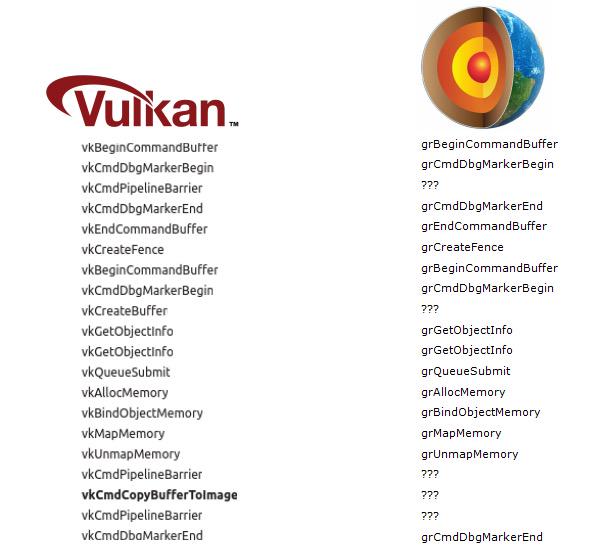As I covered
here, when AMD officials began to publicly urge developers to steer away from its Mantle API in favor of DirectX12 and the next iteration of OpenGL called Vulkan, it didn’t take long to declare Mantle dead.
But now we know why. AMD's Robert Hallock
confirmed on a blog post that Mantle had, for the most part, been turned into the Khronos Group’s Vulkan API that would supersede OpenGL.
“The cross-vendor Khronos Group has chosen the best and brightest parts of Mantle to serve as the foundation for 'Vulkan,' the exciting next version of the storied OpenGL API,” Hallock wrote. “Vulkan combines and extensively iterates on (Mantle’s) characteristics as one new and uniquely powerful graphics API. And as the product of an incredible collaboration between many industry hardware and software vendors, Vulkan paves the way for a renaissance in cross-platform and cross-vendor PC games with exceptional performance, image quality and features.”
Although AMD has had unexpected success with developers adopting Mantle, it was unlikely to become a standard without the support of its chief competitor Nvidia. When Microsoft announced DirectX 12, which adopted features of Mantle, AMD's API looked to be a technological dead end.
But with Vulkan being largely based on Mantle, it could potentially give AMD an advantage over Nvidia and Intel since it knows where the proverbial bodies are buried.
Jon Peddie, a graphics analyst with Jon Peddie Research said an advantage for AMD is there but it's pretty remote.
"It might, but I don’t think so. Vulcan (which isn’t even fully spec’ed yet) is an open Khronos-wide API, and so any of the Khronos members have access to it and can exploit it as they wish," Peddie said. "However, one thing about Vulkan is that its power and efficiency comes with the burden of very low-level (i.e, hard) programming. You really have to know how to manage memory, and draw calls to get it to sit up and sing for you, so smaller firms with limited engineering skills and staff won’t be able to get as much out of it as quickly as larger firms."
Neil Trevett, the president of the Khronos Group, and an executive with Nvidia, also downplayed any advantage any company had at this point.
"Many companies have contributed to Vulkan and SPIR-V—Mantle gave us a tremendous head start—but Vulkan is definitely a working group design now," Trevett said. "Multiple hardware companies demonstrated early Vulkan drivers at GDC - including Imagination, Intel, and Nvidia—ARM also reported on their driver performance."
Trevett also added that although developers writing for Vulkan will need more resources over OpenGL initially, that will change as libraries and tools are added to it.
One thing's for sure, while Nvidia ignored Mantle it can’t ignore Vulkan, which will become the
de facto alternative cross-platform API to DirectX.


